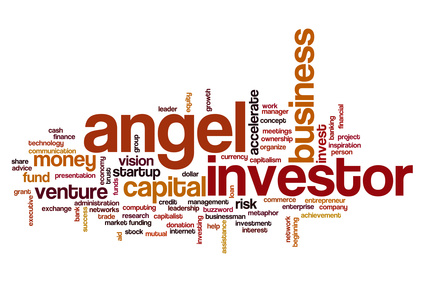
One of the first topics I covered on WomenInvest was “Are you ready to become an Angel Investor?” I thought I would dust off this prior post and update it given all the changes in the startup ecosystem over the past decade.
The term “angel investor” is used to describe a wide variety of investors in early stage companies. From the reality-show world of Shark Tank where entrepreneurs are grilled in front of a prime-time audience to established professional networks of angel investors, including Golden Seeds and New York Angels (both of which I am a member), it is clear that there is more than one type of angel investor. The passage of The Jumpstart Our Business Startups (“JOBs”) Act in April of 2012 was meant to broaden the number of investors able to participate in this sector and at the same time loosen some regulations on early stage companies raising funds.
The origin of the term “Angel Investor” can be traced back to Broadway, when wealthy patrons invested their own money to help launch Broadway shows. Today’s angel investors are typically high net worth individuals (“accredited investors”) who invest either solo, as part of an angel group or online via platforms such as Angel List. In most case Angel Investors provide both investment capital and guidance to early stage companies. With the passage of the JOBs Act, even investors who do not meet the “accredited investor” test are able to participate through online portals such as Republic. (Note: There are many other online platforms – these are just two that I have come across while reviewing potential investments)
Whichever path you chose to begin investing in this sector, it is important to keep in mind that:
Angel Investing Involves….
- A high degree of risk:
- A need for portfolio diversification:
- Patient capital:
- More than just the money:
Risk: Investing in early stage companies involves a high degree of risk. The statistics are quite sobering and data on angel investor performance indicates that 5-10% of portfolio investments provide the majority of investor returns. One source of information that I follow is Seraf Compass that published a great post on Angel Investing Returns. Most angels are “Accredited Investors “ who must meet certain net worth and income requirements or financial sophistication tests as defined by the SEC. As mentioned above, there are now opportunities for “Non-Accredited” investors to participate in this market. Given the stage of these companies, there is certainly more “art” than “science” in making an investment decision.
Diversification: With the high-risk profile of these early stage investments, it is important to have a portfolio of investments to increase the probability that there will be some “winners” in your portfolio. In an earlier post this year, I indicated that my goal was to include more “ I am so excited to be a part of this great company” and hopefully limit the “What was I thinking” investments. Each angel investor needs to determine how much capital they are prepared to invest in this sector and whether they can construct a portfolio of individual investments or should perhaps consider investing via a fund to provide that diversification.
Patient Capital: Early stage investments are highly illiquid. Although there have been more opportunities in the secondary market for “pre-IPO” private company investments, you should be prepared to be investor for several years and also to be open to participating in subsequent rounds of financing for your portfolio companies.
More than the Money: For many angel investors, the opportunity to get involved in exciting new ventures and mentor entrepreneurs is an important ingredient in the desire to act as an angel.
Angel Investing can be rewarding both financially and emotionally due to the real impact you can have on early stage companies. Before you get measured for your wings, make sure you understand your personal risk tolerance, your ability to make a sufficient capital investment to this sector to provide diversification and your willingness to truly invest for the long term.
If you decide that an angel investing makes sense for you, the next step is to identify what type of angel fits you and your investment style. Should you decide to participate in an Angel Group, you can find a comprehensive list of Angel Groups in the directory of the Angel Capital Association. Groups come in all shapes and flavors. Some are very focused on a specific sector in the market, some regional and others focused on female founders, alumni affiliations, etc. Angel Groups may require that you become an “active” member of the group and require a minimum commitment of both your dollars and your time. Before you commit to a group, see if you can participate as a guest at one of their screening or investment sessions to get a better sense if this group makes sense for you.
Over the past 20 or so years that I have been investing in this space, I have acted solo, invested through funds and also invested as a member of angel groups. All three methods have advantages and disadvantages. Solo investing is great if you really have expertise in the space and want to be able to make quick decisions. It also helps to have a “significant” amount of capital to invest. Funds can provide great diversification to your portfolio or provide opportunities for you to participate in sectors where you do not have real domain expertise. One such group of funds that I participate in is the Portfolia Group of Funds, which have enabled me to invest indirectly in FemTech and other specific verticals. Angel Groups can bring many different perspectives and expertise not only to the investment decision itself but also to supporting the entrepreneur post funding.
Whichever method you chose as you don your angel wings, best of luck in the journey. There is nothing more rewarding in the investment world than helping to launch a new company

 The New Year is great time for reflection, especially when entering a new decade. Looking back over the past ten years, the ecosystem of Angel Investing has experienced a number of innovations, seen new players enter the market and even added some new terms to the lexicon. A few highlights include:
The New Year is great time for reflection, especially when entering a new decade. Looking back over the past ten years, the ecosystem of Angel Investing has experienced a number of innovations, seen new players enter the market and even added some new terms to the lexicon. A few highlights include: Over the past few months, I have had several people reach out to me to ask my advice as to how to become an angel investor. So I thought it timely to put pen to paper to provide my take as to how to consider investing in this asset class. There are obviously many approaches to exploring this question; this is just one woman’s view!
Over the past few months, I have had several people reach out to me to ask my advice as to how to become an angel investor. So I thought it timely to put pen to paper to provide my take as to how to consider investing in this asset class. There are obviously many approaches to exploring this question; this is just one woman’s view! Although long past are the days of racing up and down the aisles of Staples, kids in tow, to acquire all the school supplies on the “list” (probably these days best achieved with a one-click of Amazon Prime), the imminent arrival of the crisp weather of fall always turns my attention to “back to school” thoughts. These days, back to school means reviewing resources to help educate angel investors. Having had the privilege over the past six years to provide leadership to the
Although long past are the days of racing up and down the aisles of Staples, kids in tow, to acquire all the school supplies on the “list” (probably these days best achieved with a one-click of Amazon Prime), the imminent arrival of the crisp weather of fall always turns my attention to “back to school” thoughts. These days, back to school means reviewing resources to help educate angel investors. Having had the privilege over the past six years to provide leadership to the 


 It’s that time once again to reflect on the prior year and make some resolutions for the next.
It’s that time once again to reflect on the prior year and make some resolutions for the next. 